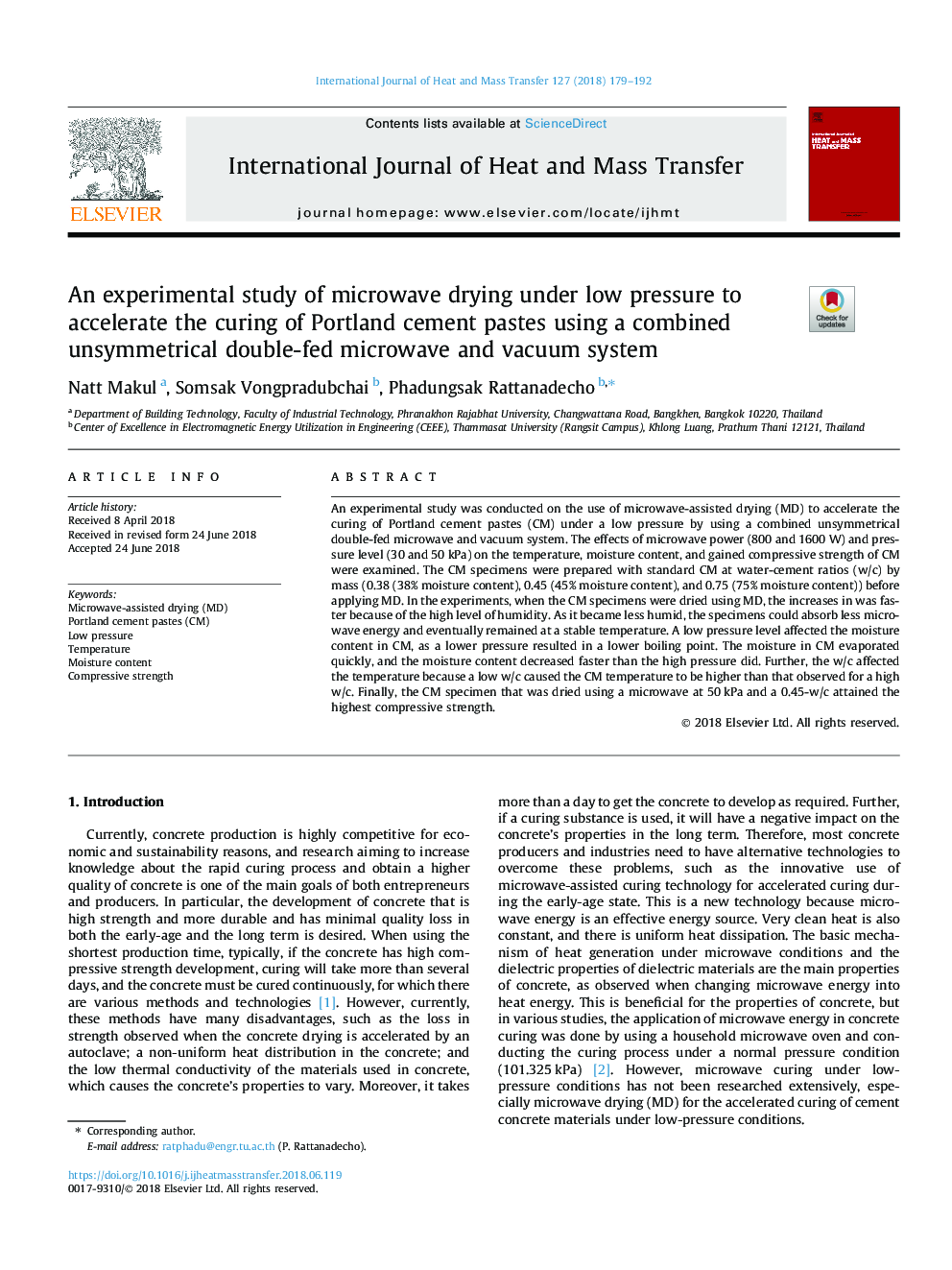| Article ID | Journal | Published Year | Pages | File Type |
|---|---|---|---|---|
| 7053764 | International Journal of Heat and Mass Transfer | 2018 | 14 Pages |
Abstract
An experimental study was conducted on the use of microwave-assisted drying (MD) to accelerate the curing of Portland cement pastes (CM) under a low pressure by using a combined unsymmetrical double-fed microwave and vacuum system. The effects of microwave power (800 and 1600â¯W) and pressure level (30 and 50â¯kPa) on the temperature, moisture content, and gained compressive strength of CM were examined. The CM specimens were prepared with standard CM at water-cement ratios (w/c) by mass (0.38 (38% moisture content), 0.45 (45% moisture content), and 0.75 (75% moisture content)) before applying MD. In the experiments, when the CM specimens were dried using MD, the increases in was faster because of the high level of humidity. As it became less humid, the specimens could absorb less microwave energy and eventually remained at a stable temperature. A low pressure level affected the moisture content in CM, as a lower pressure resulted in a lower boiling point. The moisture in CM evaporated quickly, and the moisture content decreased faster than the high pressure did. Further, the w/c affected the temperature because a low w/c caused the CM temperature to be higher than that observed for a high w/c. Finally, the CM specimen that was dried using a microwave at 50â¯kPa and a 0.45-w/c attained the highest compressive strength.
Related Topics
Physical Sciences and Engineering
Chemical Engineering
Fluid Flow and Transfer Processes
Authors
Natt Makul, Somsak Vongpradubchai, Phadungsak Rattanadecho,
